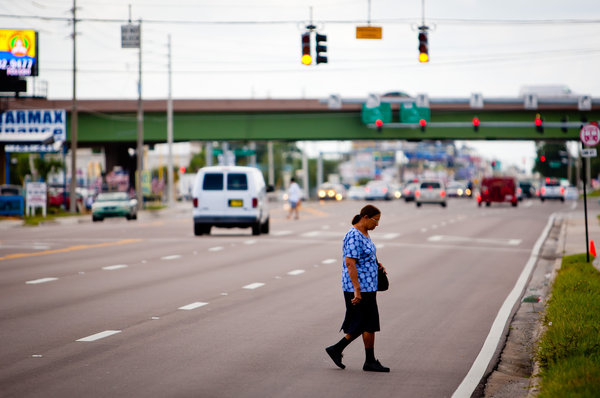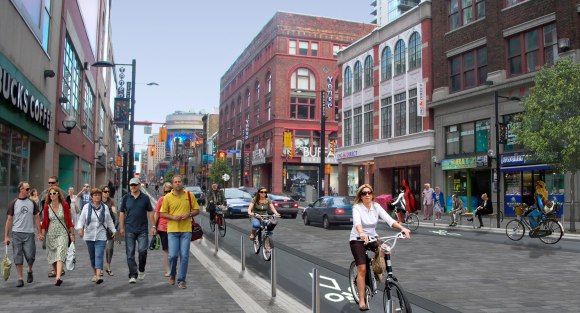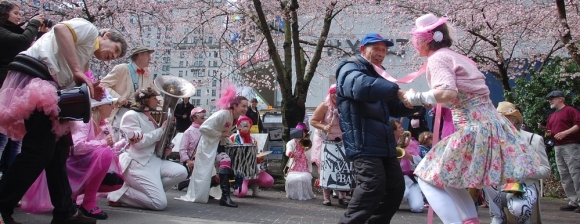The road is frequented by a variety of users – drivers, public transit vehicles, cyclists, and pedestrians. However, as each of these users, there are many obstacles, which typically involve the other users getting in the way. This is most common for drivers – since the typical North American road design is oriented towards easy mobility for cars, drivers have adjusted to a culture of innate entitlement for the road. This makes it more difficult for pedestrians and cyclists to get around, less likely for people to use transit, and increases the likelihood for a collision.
It is no longer uncommon to hear about cyclist deaths in the City – and it’s not always one person’s fault. It’s the way our streets are designed. There are definitely careless drivers, cyclists and pedestrians, that cause accidents. However, if the road was designed to cater for everyone equally, in a way that prevented anyone from feeling like they ‘own the road’, then everyone would naturally look out for each other.
There is a fairly modern transportation policy and design approach called ‘Complete Streets‘ that advocates the ‘share the road‘ mentality. The goal for the Complete Streets approach is to achieve and maintain safe, convenient and comfortable travel and access for users of all ages and abilities regardless of their mode of transportation. In many cases where the Complete Streets approach has already been implemented, the designs have proven to improve safety, health, economic and environmental outcomes.
 Since automobile dependence has been engrained into American city designs from the start, many regions are interested in adopting Complete Streets policies into their own Official Plans, in order to move forward in a more sustainable and safe manner through design. This is part of the reason why roundabout, public transit and bike lane funding have become such hot topics, for example.
Since automobile dependence has been engrained into American city designs from the start, many regions are interested in adopting Complete Streets policies into their own Official Plans, in order to move forward in a more sustainable and safe manner through design. This is part of the reason why roundabout, public transit and bike lane funding have become such hot topics, for example.
This rendering illustrates a person’s idea of what Yonge street could look like if it was redesigned under Complete Streets standards. Notice a few things – wider sidewalks, bike lanes, interlock pavement for drivers (the more detail in the paving, the more likely people are to slow down, reducing the likelihood of a collision), and seating.
Complete Streets means everyone shares the road. Complete Streets means everyone gets equal respect. Complete Streets means everyone gets to where they are going safely.








